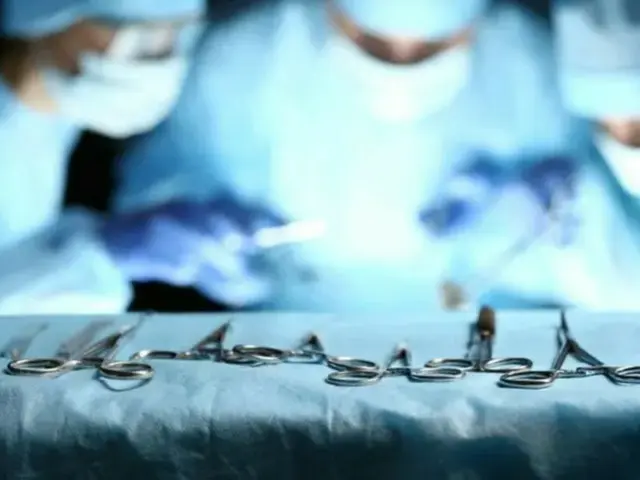There is a growing concern that this may lead to a medical diagnosis. Although some organizations have softened their stance, the situation remains unpredictable. On the 6th of this month, the South Korean government announced that in order to resolve the shortage of doctors, admissions to university medical schools will be increased.
It has been announced that the number of applicants will be increased by 2,000 from the 2025 entrance exam. This is the first time in 27 years that the number of students has increased since 1998, when a new medical school was established at Jeju University in the south. The capacity was 3507 people in 1998.
However, it was reduced to 3,058 people in 2006, and has remained at 3,058 people every year since then. In 2020, the number of doctors per 1,000 people in South Korea will increase according to the Organization for Economic Cooperation and Development (
It was reported that this is the lowest level among OECD member countries. According to the “Health and medical personnel statistics and implications for major OECD countries” published in the same year by the Korean National Assembly Legislative Research Service (Institute), the population of South Korea is 10.
The number of doctors per 00 people was 2.3, lower than the average for OECD member countries (3.5) and the lowest among member countries. The former Moon Jae-in administration tried to resolve the shortage of doctors.
In July 2020, the government announced a plan to expand medical school capacity by training an additional 4,000 doctors over 10 years. However, the plan did not come to fruition due to opposition, including strikes by medical students and resident doctors. Medical student at the time
The doctors and trainees point out that the cause is not that there is not enough doctors overall, but rather that the medical fees for doctors in so-called essential departments such as surgery and obstetrics and gynecology are low. Appropriate allocation of doctors
He argued that the lack of qualified doctors in medical departments, which require long working hours and large responsibilities, is resulting in a shortage of doctors. At the time, the Korean Medical Association went on strike due to the coronavirus pandemic.
. The Moon administration has given up on increasing capacity for the time being in order to prioritize responding to the coronavirus. Even after the change of administration, the South Korean government continued to insist on expanding the number of students admitted to medical schools. President Yoon Seo-gyeol (Yun Seok-yue)
In October, at an essential medical innovation strategy meeting that I attended, he stated, ``In order to restore local and essential medical care and prepare for a super-aging society, expanding and developing medical human resources is a necessary condition.'' necessity
He insisted. The majority of the public also supports increasing the number of people, and according to the results of a public opinion poll released by the Health and Medical Labor Union in December last year, 89.3% of respondents said they were in favor of increasing the number of people.
At the State Council meeting he presided over on the 6th of this month, President Yoon emphasized, ``In order to protect the health and lives of the people, expanding the number of doctors is a timely issue that cannot be delayed any longer.'' This afternoon, the Ministry of Health and Welfare (
The Ministry of Health, Labor and Welfare (Ministry of Health, Labor and Welfare) announced that it will increase the number of students in the Faculty of Medicine by 2,000 from 2025, from 3,058 to 5,058. The reason for increasing the number of staff by 2,000 is to meet medical demand by 203
This result reflects estimates that an additional 10,000 doctors will be needed by 2015. The government emphasized, ``This is our last chance to maintain the medical system, which is on the brink of a precipice, and prepare for a super-aging society.''
Doctors' organizations strongly objected to this announcement. The Korean Medical Association held rallies across the country on the 15th and teased a strike. Promoted to increase admission capacity in 2020
When this happened, some general practitioners who objected to the move decided to close their clinics, and more than 80% of specialty doctors left the medical field, leading to chaos. Similar concerns have been raised this time as well, and the President's Office announced on the 12th,
He urged self-restraint. Yonhap News reports that the all-out strike teased by the Korean Medical Association amounts to ``refusal of medical treatment,'' which violates the Medical Care Act, and that ``the government can issue an order to start work based on the law.
If they do so, they may face administrative penalties and criminal charges." On the other hand, the Korean Medical Specialist Council, which is made up of specialist doctors (interns), held an extraordinary general meeting on the 12th, and there were no questions regarding collective action.
He took a cautious stance. Although the stance has softened somewhat, Yonhap News reported on the 13th, saying, ``The government is relieved that the specialized doctors did not immediately express their intention to take collective action, but
We are monitoring the situation closely, as it is possible that the employees could go on strike at any time, such as closing their clinics, or take mass resignations.''
2024/02/14 13:17 KST
Copyrights(C)wowkorea.jp 5

